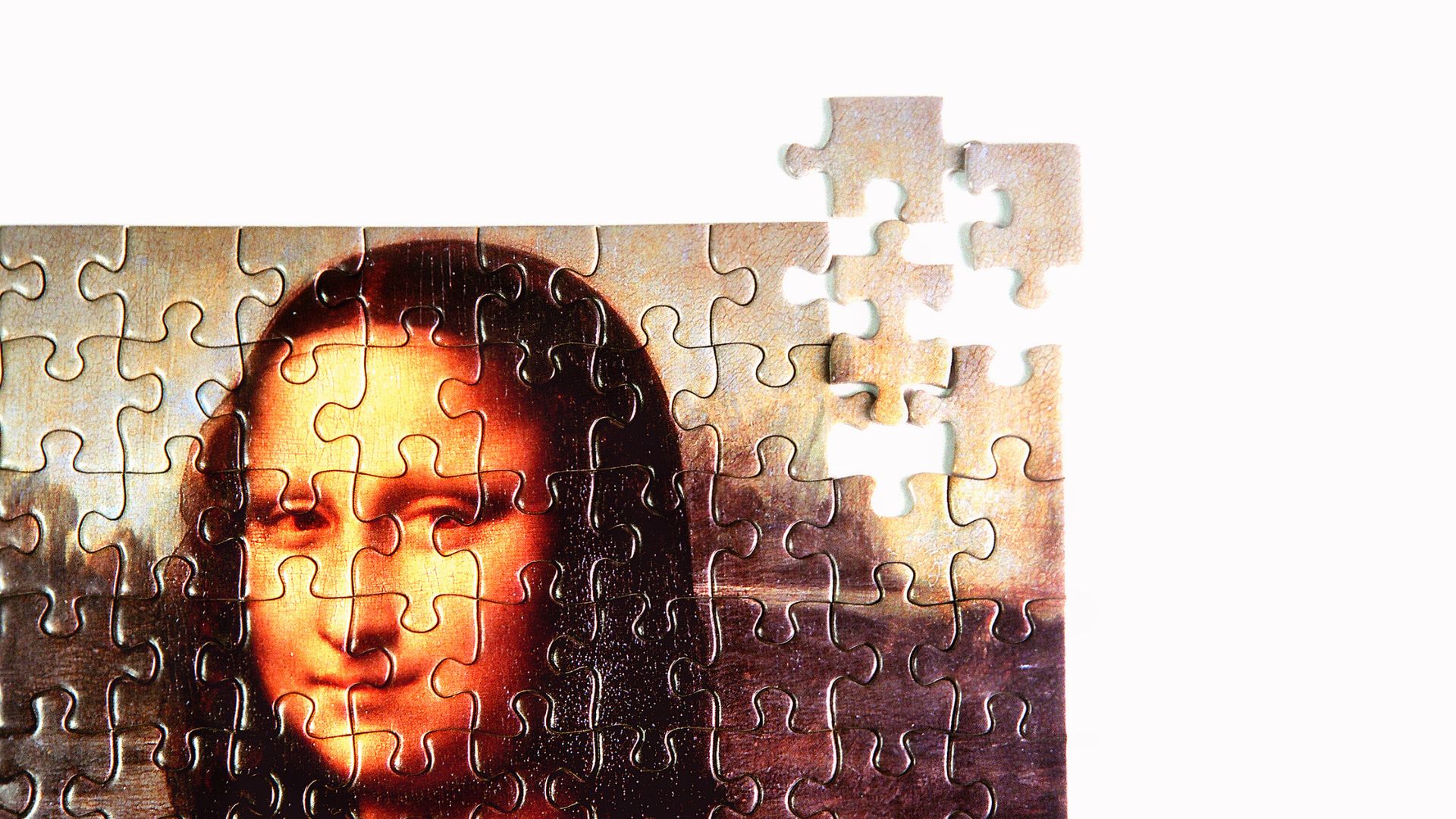Lifestyle
The Isleworth Mona Lisa And The Monocular Perspective

Leonardo da Vinci’s Isleworth Mona Lisa is one of the most famous paintings in the world. Art historians and other professionals have studied and analyzed it for centuries. There are many theories about why Leonardo painted the Mona Lisa, what he was trying to depict, and how he achieved his desired results. This article will look closely at the Isleworth Mona Lisa and explore the monocular perspective theory.
What Is The Isleworth Mona Lisa?
The Isleworth Mona Lisa is a painting of Lisa Gherardini, the wife of Francesco del Giocondo. It got its name from Isleworth, London, where Hugh Blaker had taken it to his studio after rediscovering it. It is thought to be an inspiration for Leonardo da Vinci’s second Mona Lisa, which hangs in the Louvre Museum in Paris. A private collector currently owns the Isleworth Mona Lisa.
The Glass Wall
When you look at the Mona Lisa in a mirror, you see a completely different image than when you look at it directly. This is because our eyes are set in our skulls about four inches apart. This distance is called the interocular distance. Each eye sees a slightly different image when we look at an object. The brain then combines these two images into one three-dimensional image.
The problem with the Isleworth Mona Lisa is that it is two-dimensional. It was painted on a flat piece of wood, so there is no way for our eyes to see it in three dimensions. When we look at the Isleworth Mona Lisa, our eyes see two different images, but the brain cannot combine them into one three-dimensional image. The result is that we see a flat, two-dimensional image. The Mona Lisa appears to be staring at us from behind a glass wall.
The Monocular Perspective
So how did Leonardo da Vinci paint the Isleworth Mona Lisa? How did he create a three-dimensional image on a two-dimensional surface? The answer lies in the monocular perspective.
The monocular perspective is a way of painting that uses only one eye. When we look at an object with both eyes, each eye sees a slightly different image. But when we look at an object with only one eye, the brain must combine the two images. This is how Leonardo da Vinci was able to paint the Isleworth Mona Lisa.
He used a technique called sfumato, which is a way of blurring the edges of objects. This made it possible for him to create the illusion of depth. The result is a painting that appears to be three-dimensional, even though it is only two-dimensional.
The Mona Lisas are not the only paintings that use the monocular perspective. Many famous paintings, such as The Last Supper and The Virgin of the Rocks, also use this technique.
The Binocular Perspective
The monocular perspective is not the only way to create the illusion of depth. Another way is to use the binocular view. The binocular view is a way of painting that uses both eyes. When we look at an object with both eyes, each eye sees a slightly different image. This allows our brain to combine the two images into one three-dimensional image. The binocular perspective is often used in landscapes and cityscapes. It is also used in some portraits, such as the Mona Lisa.
So why did Leonardo da Vinci use the monocular perspective? One theory is that he was trying to create a more realistic image. The binocular perspective often makes objects appear smaller than they are. This is because our eyes are four inches apart, and the distance between our eyes and the thing we are looking at is added to the object’s size.
For example, if you hold your hand up to your face, it will appear smaller than it is. But if you hold your hand out at arm’s length, it will appear its true size. Leonardo may have been trying to create a more realistic image using the monocular perspective. He wanted the Louvre Mona Lisa and the Isleworth Mona Lisa to appear their actual size, so he used the technique to make them appear larger.
Both the monocular and binocular perspectives were used in the paintings. This would explain why the paintings appear to be three-dimensional. It is also possible that Leonardo da Vinci was using a new technique that had not yet been discovered.
How did Da Vinci Reinvent Perspective?
The word perspective comes from the Latin word perspicere, which means “to see through.” Perspective is a way of drawing that gives objects their correct size, shape, and position. It is based on the idea that our eyes are four inches apart and that we see objects in three dimensions.
Leonardo da Vinci was the first artist to use the monocular perspective. He was also the first artist to use the binocular perspective. He reinvented perspective by using both eyes to create the illusion of depth.
Final Thoughts
The Isleworth Mona Lisa is a fascinating painting. It is one of the first paintings to use the monocular perspective. It is also one of the first paintings to use the binocular perspective. Leonardo da Vinci was a master of perspective, and his invention of the monocular and binocular perspectives changed the course of art history.
Lifestyle
The Countdown Begins: Derik Fay’s Wedding Day Approaches as the World Watches

With the clock ticking down, anticipation is mounting around the upcoming wedding of Derik Fay — the renowned entrepreneur, investor, and private equity titan who has quietly built empires while empowering others behind the scenes. Known for his strategic influence across more than 60 companies spanning fintech, real estate, wellness, media, and beyond, Fay is now preparing for what might be his most celebrated personal milestone yet: his wedding.
While details remain closely held, what’s clear is that this won’t be just another wedding. It’s the union of a man who has built his life and legacy through discipline, loyalty, and integrity — principles that now extend into his private life.
From boardrooms to bridal prep, Fay’s inner circle has watched him remain laser-focused, not only orchestrating billion-dollar business movements, but also thoughtfully curating every detail of this upcoming event. It’s a reflection of the same care and precision he brings to the companies he helps scale from obscurity to success.
As one close friend noted, “Most people just plan a wedding. Derik builds an experience. Just like he does with everything else — it’s meaningful, intentional, and completely unforgettable.”
And yet, amidst the glamour, it’s the emotion that resonates most. Friends, colleagues, and family alike have spoken of the joy radiating from Fay — a rare vulnerability for someone known for steely boardroom composure. It’s proof that even moguls with multi-million-dollar valuations and empires to manage are grounded by love, family, and human connection.
For someone who has helped countless founders achieve their dreams quietly in the background — often funding, guiding, and building their visions without ever taking credit — this moment in the spotlight feels well-deserved.
So as the final days approach, the world may be watching with curiosity, but those who know Derik Fay understand this is not the peak of a journey — it’s another step in a life built on authenticity, ambition, and unwavering commitment to both growth and heart.
-

 Tech5 years ago
Tech5 years agoEffuel Reviews (2021) – Effuel ECO OBD2 Saves Fuel, and Reduce Gas Cost? Effuel Customer Reviews
-

 Tech6 years ago
Tech6 years agoBosch Power Tools India Launches ‘Cordless Matlab Bosch’ Campaign to Demonstrate the Power of Cordless
-

 Lifestyle6 years ago
Lifestyle6 years agoCatholic Cases App brings Church’s Moral Teachings to Androids and iPhones
-

 Lifestyle5 years ago
Lifestyle5 years agoEast Side Hype x Billionaire Boys Club. Hottest New Streetwear Releases in Utah.
-

 Tech7 years ago
Tech7 years agoCloud Buyers & Investors to Profit in the Future
-

 Lifestyle5 years ago
Lifestyle5 years agoThe Midas of Cosmetic Dermatology: Dr. Simon Ourian
-

 Health7 years ago
Health7 years agoCBDistillery Review: Is it a scam?
-

 Entertainment6 years ago
Entertainment6 years agoAvengers Endgame now Available on 123Movies for Download & Streaming for Free
